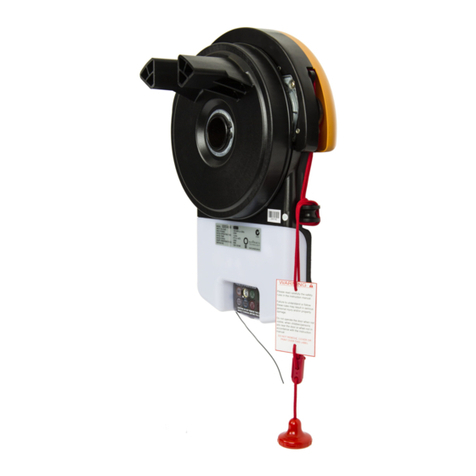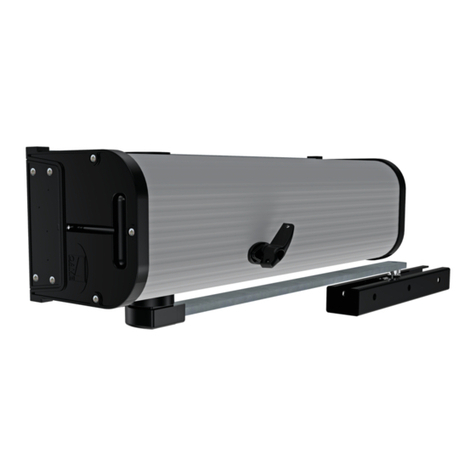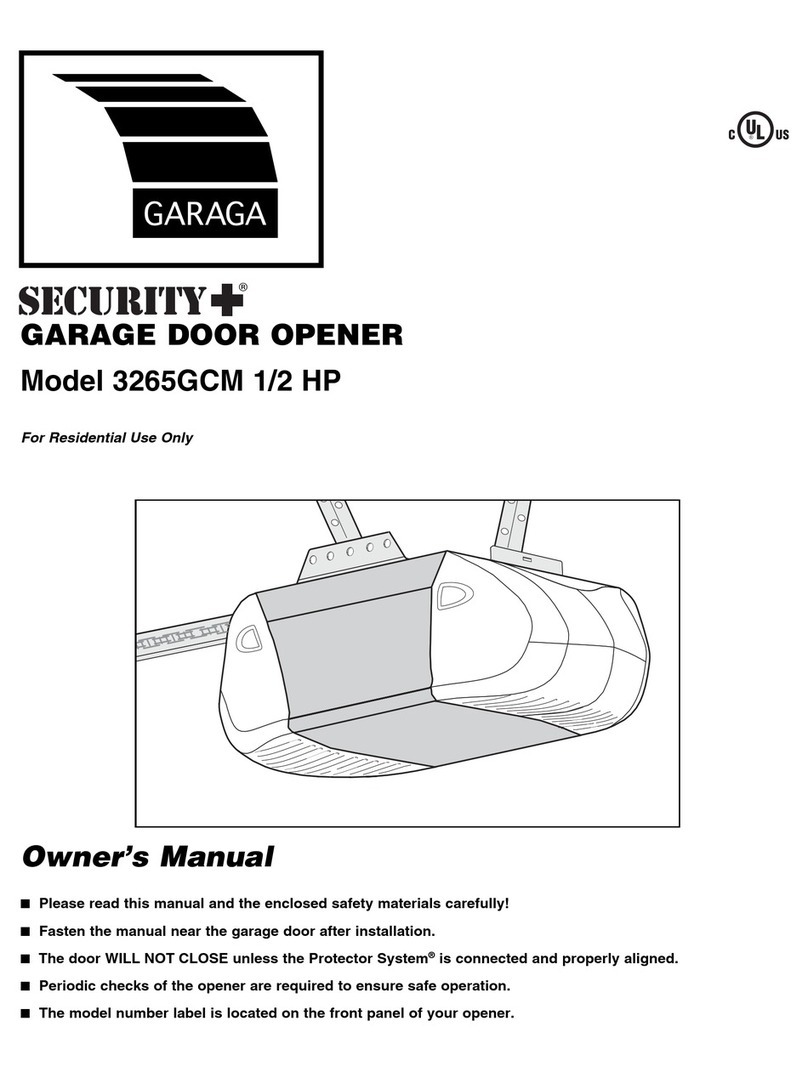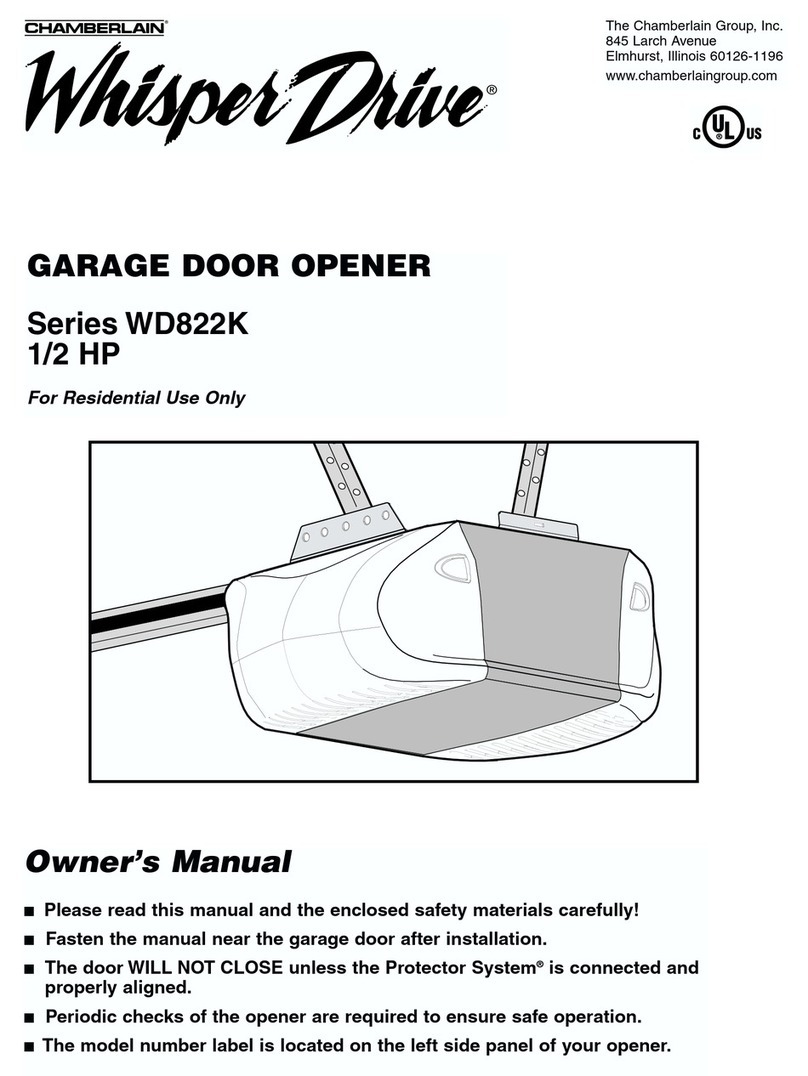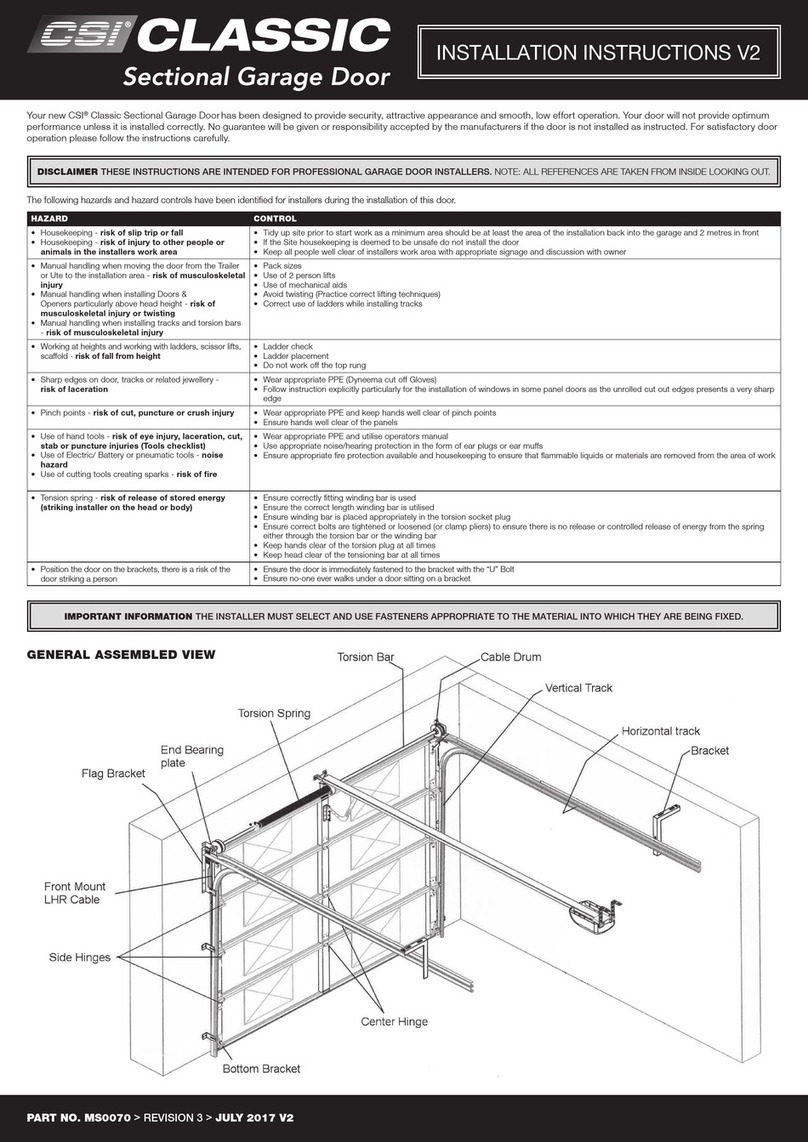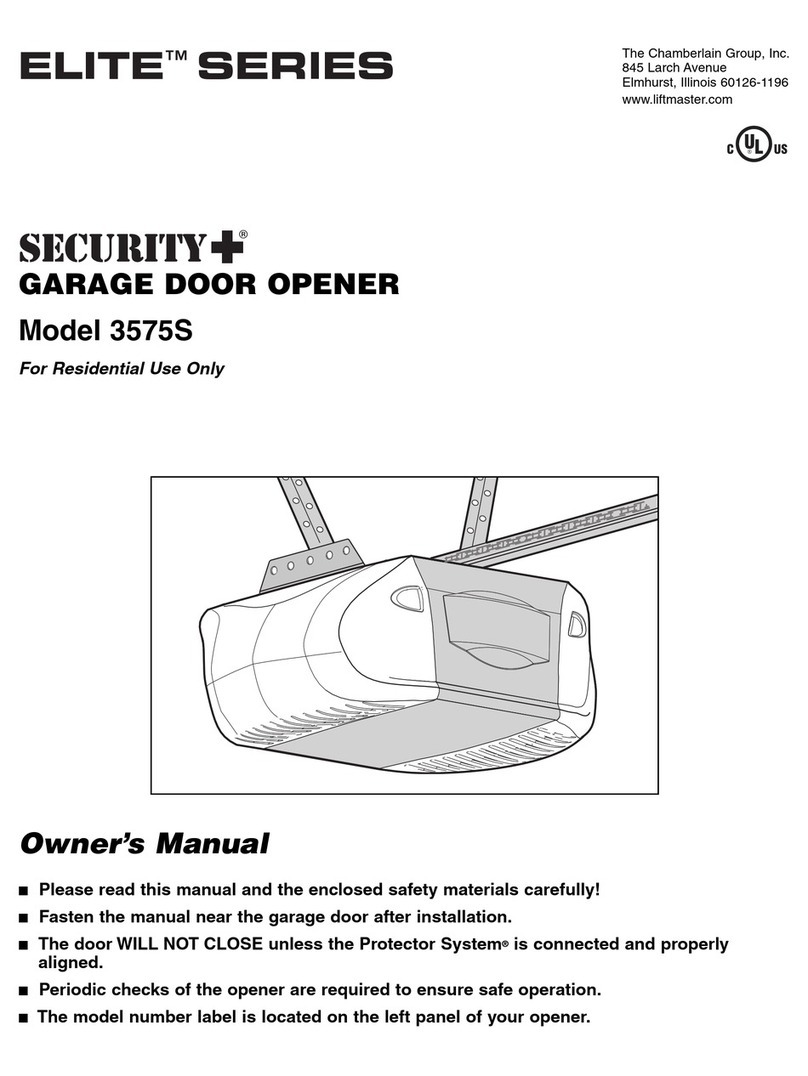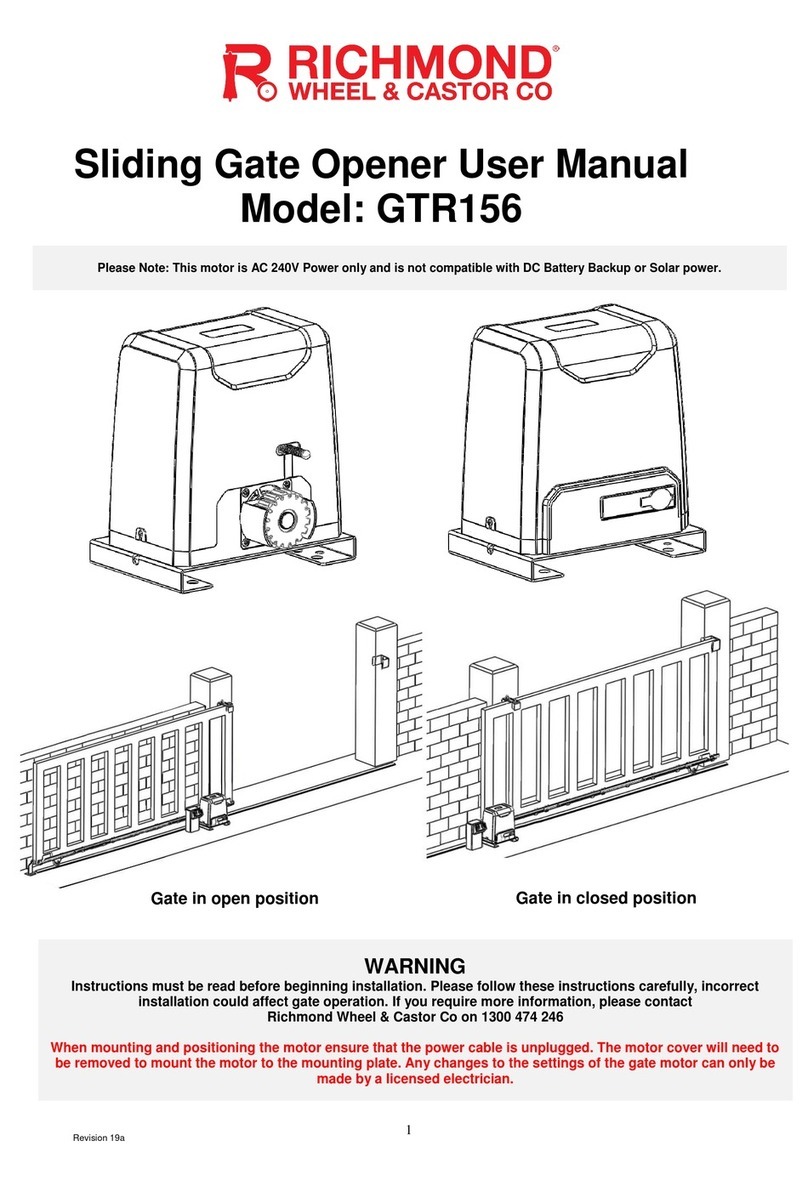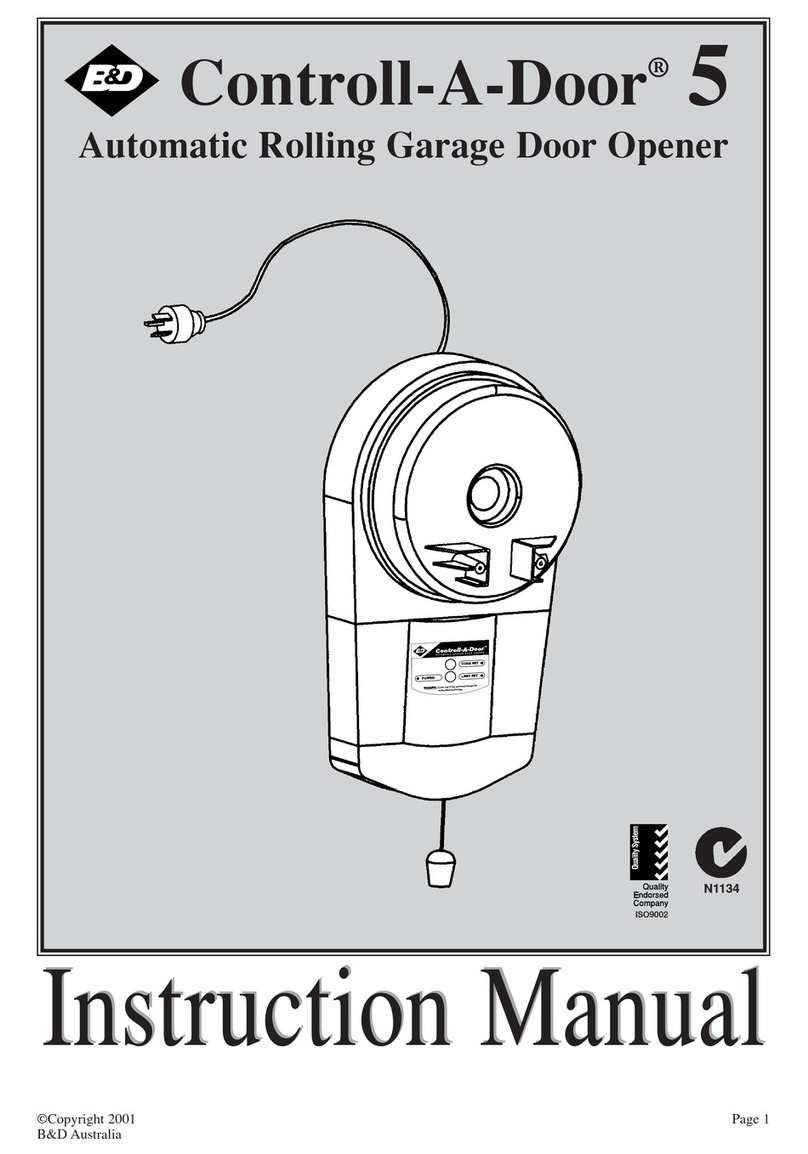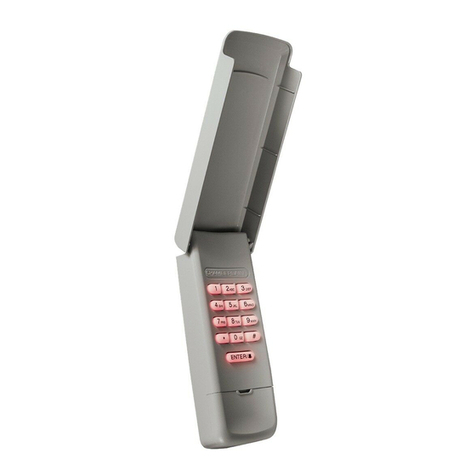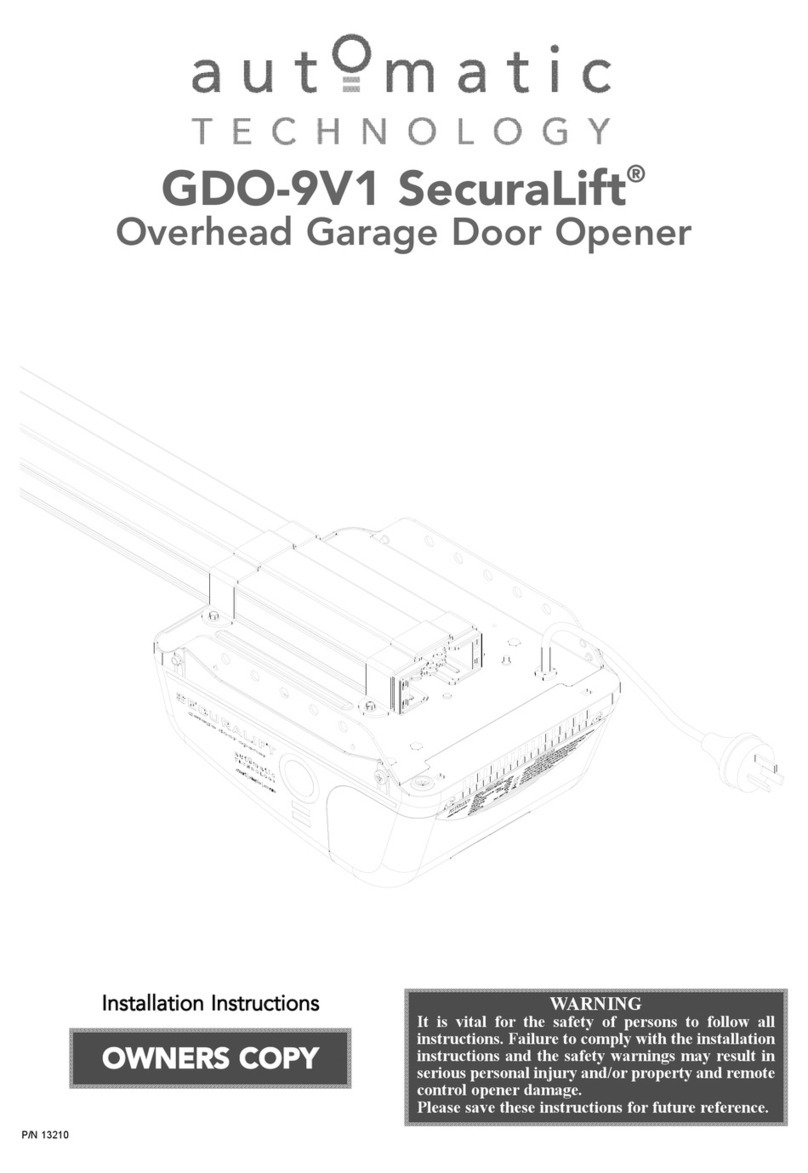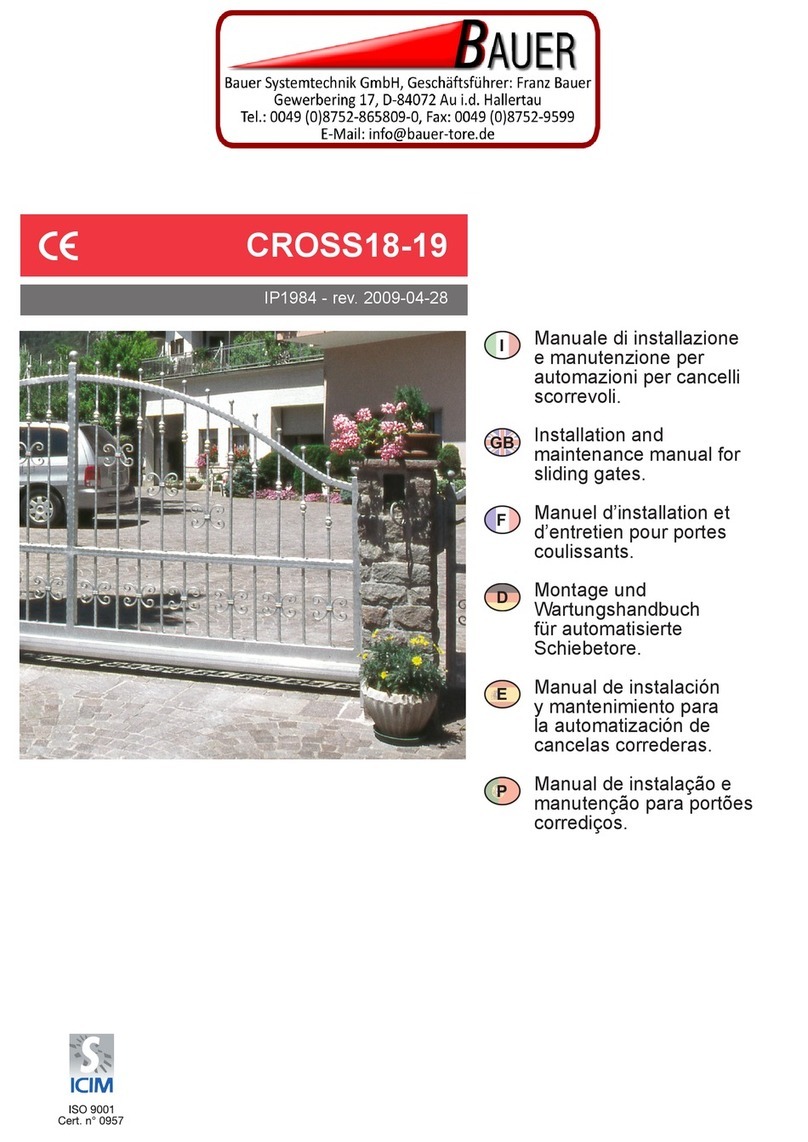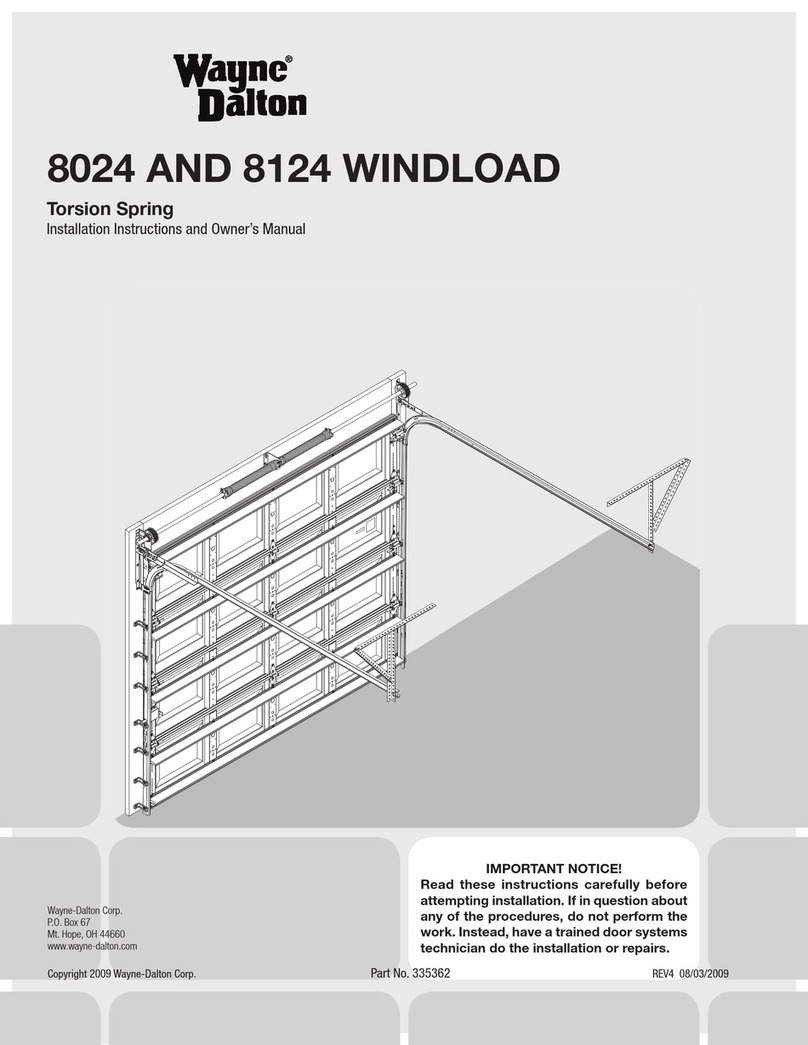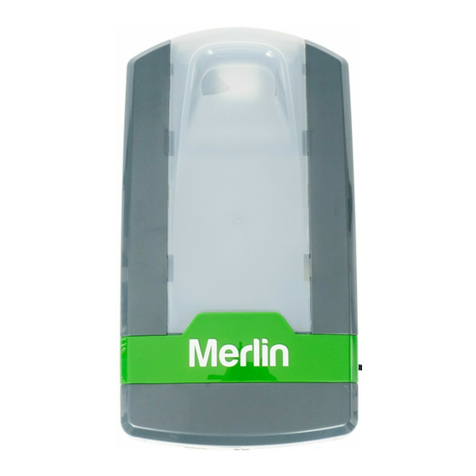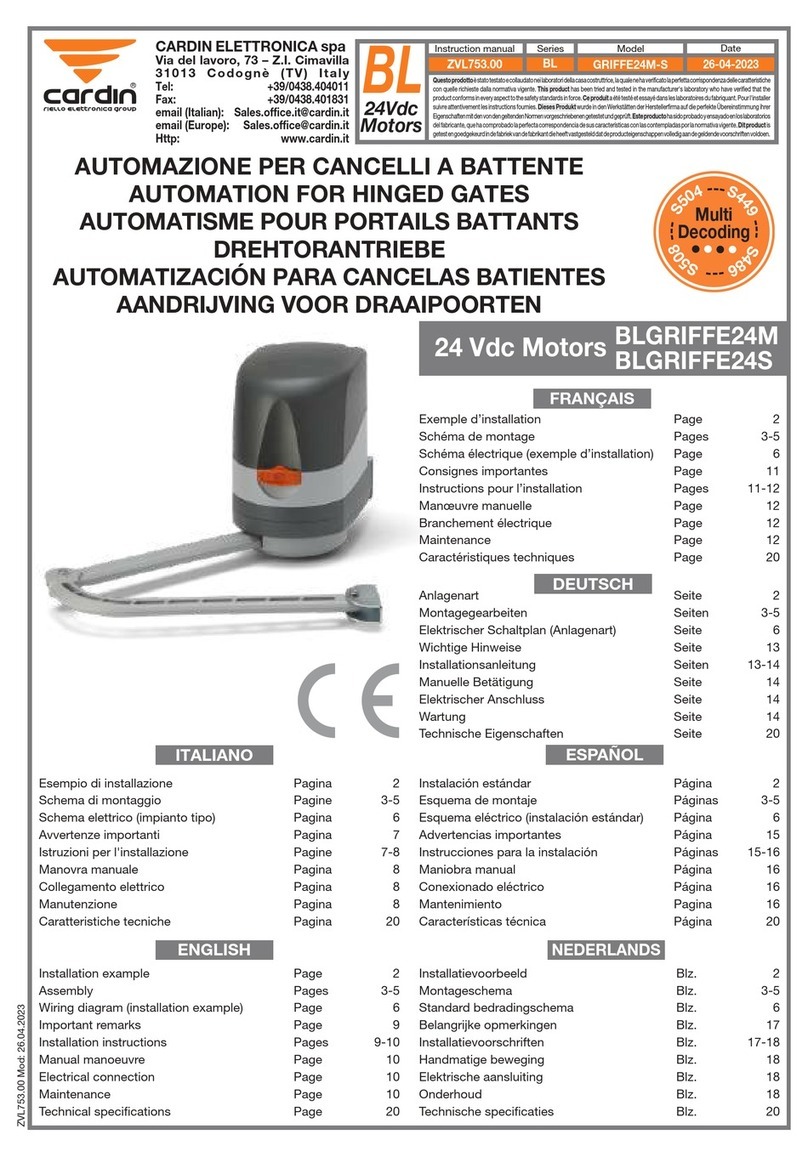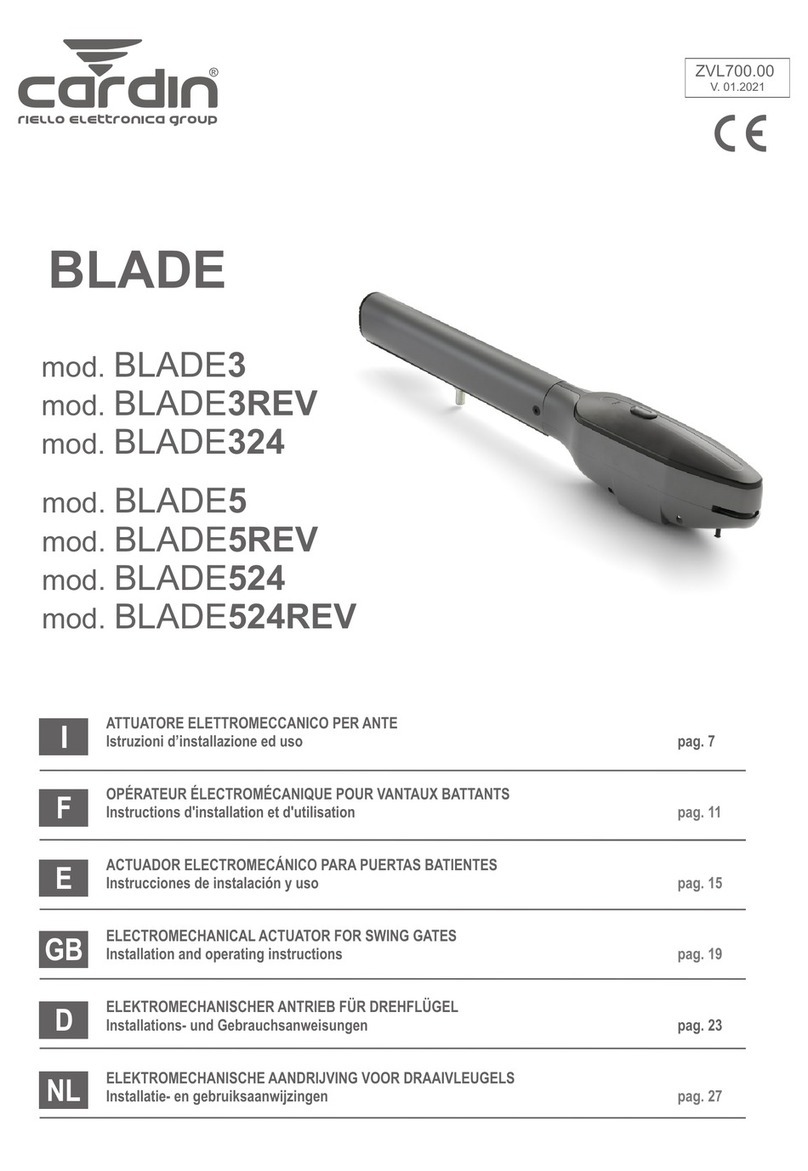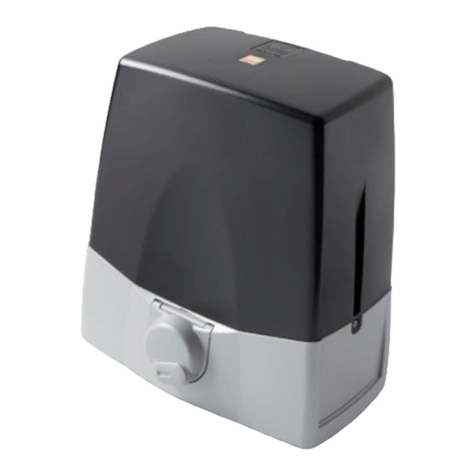7
s $OPOAVERINSTALLATOILDISPOSITIVOe prima di dare tensione
alla centralina, verificare che il movimento dell’anta eseguito in
modomanuale(conmotoresbloccato)nonabbiapuntidiresistenza
particolarmente marcata.
s )LPROGRAMMATOREHALAFACOLTÌDIATTIVAREAUTOMATICAMENTEIL
motore quando sul display appare : questo viene segnalato
DAUNPRELAMPEGGIODISECONDIRIPOSIZIONAMENTOAUTOMATICO
a pagina 10).
s )LPROGRAMMATOREÒDOTATODIUNCONTROLLOSULLACORRENTEASSOR-
bita dal motore, utilizzato per bloccare il moto in condizioni di
emergenza; tale controllo non viene però fatto:
- nei primi 5 secondi della fase di apertura da completamente
chiuso;
- nei 2 secondi iniziali di ogni altro movimento;
- quando la batteria è poco carica.
Evitare pertanto di fare resistenza sull’anta in tali fasi, in caso
CONTRARIOPOTREBBESALTAREILFUSIBILEF1DELCIRCUITOMOTORE
s .ELCASOSIDEBBAVERIlCARELOSTATODELFUSIBILEF2SCOLLEGARE
prima l'alimentazione dal programmatore; ripristinarla solo dopo
aver inserito il fusibile.
s ,APRESENZADELSENSOREDICORRENTENONELIMINALOBBLIGODI
installare le fotocellule o altri dispositivi di sicurezza previsti dalle
normative vigenti.
s )LMOTORIDUTTOREÒASSEMBLATOINFABBRICAPERESSEREINSTALLATOA
SINISTRADELCANCELLO,EGGERECONATTENZIONEILPARAGRAFOIstruzioni
sul posizionamento del gruppo
s 0ERILCORRETTOFUNZIONAMENTODELPROGRAMMATOREÒNECESSARIO
che le batterie incorporate siano in buono stato: in assenza di
tensione di rete, se le batterie sono scariche, si verifica la perdita
delcontrollodellaposizionedell'antacon conseguentesegnala-
zione di allarme e riposizionamento automatico. Controllare quindi
LgEFlCIENZADELLEBATTERIEOGNISEIMESIVEDIPAGINAVerifica
delle batterie
s!CCERTARSIPRIMADIESEGUIREILCOLLEGAMENTOELETTRICOCHELA
tensione e la frequenza riportate sulla targhetta caratteristiche
corrispondano a quelle dell'impianto di alimentazione.
s 4RALACENTRALINADICOMANDOELARETEDEVEESSEREINTERPOSTO
un interruttore onnipolare, con distanza di apertura tra i contatti
di almeno 3 mm.
s.ONUTILIZZARECAVOCONCONDUTTORIINALLUMINIONONSTAGNARE
l’estremità dei cavi da inserire in morsettiera; utilizzare cavo con
marcatura T min 85°C resistente agli agenti atmosferici.
s )CONDUTTORIDOVRANNOESSEREADEGUATAMENTElSSATIINPROSSIMITÌ
della morsettiera in modo che tale fissaggio serri sia l’isolamento
che il conduttore (è sufficiente una fascetta).
COLLEGAMENTO ALIMENTAZIONE 230 Vac
s #OLLEGAREIlLIDICOMANDOEQUELLIPROVENIENTIDALLESICUREZZE
s 0ORTARELgALIMENTAZIONEGENERALEALLAMORSETTIERAseparata a tre vie pas-
sando prima attraverso il pressacavo posizionato in basso a destra rispetto
al circuito principale:
- collegare il neutro al morsetto N
- collegare la terra al morsetto
- collegare la fase al morsetto L
- Il motoriduttore è assemblato in fabbrica per essere
installato a SINISTRA del cancello (visto dall’interno).
Per l'installazione a DESTRAAGIRESULDIP8DELDIP
SWITCHDS1lGPORTANDOLOSUON
L'operazione di sblocco va fatta a motore fermo. Per sbloccare l'anta del can-
cello munirsi della chiave in dotazione all'apparecchiatura. Essa deve essere
conservata in luogo di facile reperimento.
Operazione di sblocco
1. Ruotare il copri serratura, inserire la chiave, ruo-
tarla di mezzo giro in senso antiorario ed alzare
la protezione sblocco. La manopola è libera di
sbloccare.
2. Ruotare la manopola in senso orario fino alla
fine della sua corsa. Attenzione! Non forzare
la manopola oltre la finecorsa. Il riduttore è
sbloccato ed il cancello è libero di scorrere
manualmente.
Ribloccaggio
1. Ruotare la manopola in senso antiorario fino a bloccarlo completamente.
2. Chiudere la protezione sblocco, ruotare la chiave in senso orario e ruotare
il copri serratura.
Il riduttore è bloccato ed il cancello è pronto per l'uso.
A sistema ripristinato riporre la chiave in un luogo sicuro.
Attenzione! Non usare lo sblocco durante il normale funzio-
namento del cancello. Se si sblocca il cancello e poi si dà un
comando di moto sul display apparirà il simbolo .
Accesso al quadro di comando
Attenzione! Prima di accedere al quadro di
comando assicurarsi di aver disinserito l’interrut-
tore generale a monte dell’apparecchiatura.
0ERACCEDEREALMOTOREALLENTARELEDUEVITIA
poste alle estremità laterali del coperchio come
indicato in figura 9.
Programmatore per motore in corrente continua con ricevente incorporata,
che permette la memorizzazione di 300CODICIUTENTEVEDERECOMANDOVIA
RADIOAPAG,ADECODIlCAÒDITIPOgROLLINGCODEgELAFREQUENZADIFUN-
zionamento è di 433.92 MHz.
La velocità di rotazione del motore è controllata elettronicamente, con partenza
lenta e successivo incremento; la velocità viene ridotta con anticipo rispetto
all'arrivo in battuta, in modo da ottenere un arresto controllato.
La programmazione, eseguibile mediante un solo pulsante, permette la confi-
gurazione del sistema, del sensore di sforzo e della corsa totale dell'anta.
La logica esegue un controllo di posizione tramite encoder.
L’intervento del sensore antischiacciamento/anticonvogliamento causa una
breve (10 cm) inversione del moto e poi il blocco.
